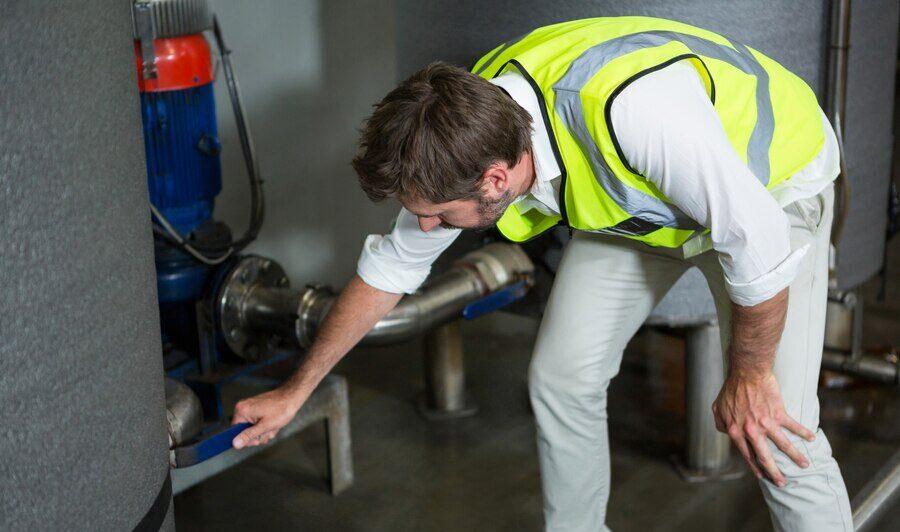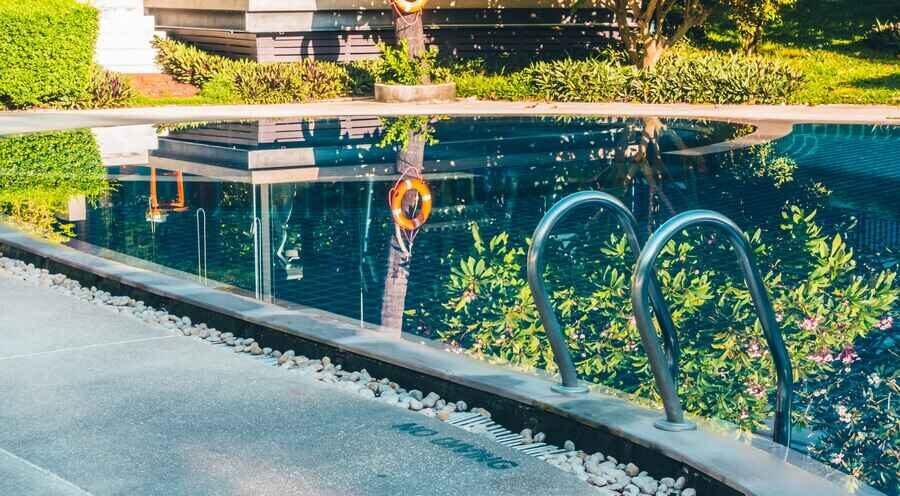Introduction:
Discovering a leak in your swimming pool can be concerning, but addressing it promptly is crucial to prevent further damage and maintain your pool’s integrity. In this article, we’ll guide you through the process of finding and fixing a pool leak efficiently. From identifying common signs to employing DIY repair methods and knowing when to seek professional help, we’ve got you covered. Dive in to learn how to safeguard your pool and enjoy uninterrupted aquatic fun.
Identifying Pool Leak Signs
Detecting a pool leak early is crucial for minimizing water loss and preventing potential damage to your pool and property. Here are some common signs that may indicate the presence of a leak:
Visible Water Loss: If you notice a significant decrease in your pool’s water level over a short period, it could be a sign of a leak. Keep an eye on your pool’s water level regularly to detect any unexplained changes.
Wet or Soggy Areas: Inspect the area surrounding your pool for wet or soggy patches of grass, soil, or concrete. These areas may indicate underground leaks in your pool’s plumbing or fittings.
Constantly Running Pool Equipment: A leak in your pool’s plumbing system can cause your pool pump and filter to run continuously as they struggle to maintain water levels. If you notice that your pool equipment is running more often than usual, it could be a sign of a leak.
Cracks or Damage: Examine your pool’s structure for any visible cracks, chips, or damage. These defects can compromise the integrity of your pool and provide pathways for water to escape.
Altered Water Chemistry: A sudden change in your pool’s water chemistry, such as a drop in chlorine levels or pH imbalance, may indicate the presence of a leak. Monitor your pool’s chemical levels regularly and investigate any unexpected fluctuations.
Unexplained Poolside Damage: Look for signs of damage to your pool deck, coping stones, or surrounding structures. Pool leaks can cause erosion and damage to these areas, leading to costly repairs if left unchecked.
Visual Inspection for Pool Leaks
Conducting a visual inspection is an essential first step in the process of locating a pool leak. Here’s how you can visually inspect your pool for signs of leakage:
Check the Pool Surface
Look closely at the pool’s surface for any cracks, chips, or damage. Pay attention to areas where the pool liner or tiles seem to be lifting or separating, as these spots might be where leaks are happening.
Check Pool Equipment
Look at the equipment pad and nearby fittings for any signs of leaks or moisture. Look for dripping water, rust, or corrosion on pipes, valves, and connections. Listen for any unusual sounds or vibrations from the equipment, as these could mean there is a leak.
Inspect Pool Deck:
Walk around the edge of your pool and look closely at the pool deck for signs of water pooling, stains, or damage. Check for cracks or gaps in the deck surface, as these can let water escape.
Look for Wet Spots
Watch for wet or soggy areas in the ground around your pool, as these can signal underground leaks in the pool plumbing or fittings. Use a shovel to gently dig around these spots to see how much moisture is present.
Check Pool Accessories:
Look at your pool accessories, like ladders, diving boards, or slides, for any damage or leaks. Make sure all fittings and connections are secure and have no cracks or wear.
Observe Water Level:
Keep an eye on your pool’s water level over time to spot any unexpected changes. Write down the water level measurements regularly and compare them to see if there are any patterns or trends.

Differentiating Leak from Evaporation
It’s important to know if your pool is losing water because of evaporation or if there’s a real leak. This helps you find and fix the problem correctly. Here’s how you can differentiate between the two:
Understanding Evaporation:
Evaporation happens when water changes from liquid to vapor and goes into the air. In hot and dry places, this can cause noticeable water loss in pools.
Perform the Bucket Test:
To see if water loss is from evaporation or a leak, try the bucket test. Fill a bucket with water to the same level as your pool and put it on the pool steps or ladder so it’s partly underwater.
Monitor Water Levels:
Mark the water level inside the bucket and on the pool wall. After 24 hours, check both levels. If they both went down by the same amount, it’s probably evaporation. If the pool water level dropped more than the bucket, you might have a leak.
Consider Weather Conditions:
Think about temperature, humidity, and wind speed. Hot and windy weather increases evaporation, while cool and humid weather slows it down.
Repeat the Test:
If the bucket test isn’t clear, do it again on a different day or when the weather is different. Consistent results will help you confirm if the water loss is from evaporation or a leak.
Monitor Pool Usage:
Keep track of how often and how long the pool is used. More splashing and activity can cause water loss. If water loss matches heavy pool use, it’s likely evaporation, not a leak.
Seek Professional Assistance:
If you can’t figure out why you’re losing water or still think there’s a leak, get help from a professional pool service. They can do advanced tests and give expert advice on fixing the problem.
Advanced Leak Detection Techniques
If you think your pool has a leak but couldn’t find it with a visual inspection or the bucket test, it’s time to use more advanced leak detection methods.

Here are some methods to pinpoint the exact location of a pool leak:
Dye Testing:
This method involves adding dye or food coloring near suspected leak areas. If the dye gets drawn into the leak, it shows where the leak is, especially for finding leaks in pool liners or fittings.
Pressure Testing:
Pressure testing involves pressurizing the pool plumbing system to detect leaks in underground pipes or fittings. A specialized pressure testing kit is used to pressurize the system, and a pressure gauge is monitored to detect any pressure drop, indicating a leak.
Acoustic Leak Detection:
This uses sensitive listening devices to hear water escaping from a leak. By scanning the pool and plumbing lines, technicians can locate the leak by listening for sound variations.
Thermal Imaging:
Thermal cameras detect temperature changes caused by water leaks. By scanning the pool and surroundings, technicians find areas where temperature differences suggest a leak.
Electronic Leak Detection:
Special equipment, like electronic sensors or moisture meters, detects moisture levels in pool components. Technicians analyze these readings to find areas of concern and potential leak locations.
Fiber Optic Inspection:
A camera on a flexible cable goes into pool plumbing or pipes to show real-time video of the inside. This lets technicians visually inspect for cracks, leaks, or blockages.
Professional Leak Detection Services:
If you’re unable to locate the leak using DIY methods, consider hiring a professional leak detection service. They have advanced equipment and skills to find and fix pool leaks accurately.
DIY Pool Leak Repair Methods
If you’ve found a small leak in your pool and feel okay doing it yourself, there are easy ways to fix it. Here’s what you can do:
Vinyl Pool Patch Kit:
If you have small tears in your vinyl pool liner, use a patch kit made for vinyl pools. Clean and dry the area around the tear, then apply the patch according to the instructions. Press it firmly to make sure it seals well.
Peel-and-Stick Patches:
These patches are easy to use for fixing small leaks in vinyl liners. Just peel off the backing and stick the patch over the leak, pressing it down firmly. Smooth out any bubbles or wrinkles for a good seal.
Waterproof Tape: You can use waterproof tape to temporarily seal small leaks or cracks in pool plumbing. Clean and dry the area, then wrap the tape tightly over the leak. But remember, this is just a temporary fix until you can do a permanent repair.
Epoxy Putty:
Epoxy putty is great for sealing leaks in different pool surfaces like concrete or fiberglass. Knead the putty until it’s soft, then press it into the leak, smoothing it out. Let it dry completely before using your pool again.
Underwater Sealant:
This sealant sticks to wet surfaces, so it’s perfect for fixing leaks in pool plumbing without draining the pool. Apply it directly to the leak, covering it completely. Let it dry fully before you start using your pool again.
Follow Instructions:
No matter which method you choose, make sure to follow the instructions carefully. Preparing the surface right and applying the repair correctly will make it last longer.
Check the Repair:
After you’ve done the repair, keep an eye on it. If you still see leaks or if they get worse, it might be time to call a professional for help.
Professional Pool Leak Repair Services
If you can’t fix a complicated pool leak on your own, it’s better to get help from professional pool service providers. Here’s why hiring a professional for pool leak repair is often the wisest choice:
Expertise and Experience:
Professional pool technicians are experts with lots of knowledge and experience. They’re trained to fix all kinds of pool leaks and keep up with the latest techniques.
Advanced Equipment:
Pool companies have special tools to find and fix leaks precisely. They use devices like sound detectors and cameras to pinpoint where leaks are happening.
Comprehensive Assessment:
Pros check your whole pool setup to find out what’s causing the leak. They look at the pipes, structure, and everything around to make sure they fix the problem for good.
Quality Materials:
Pool experts use top-notch materials made for pool repairs. Whether it’s fixing cracks or patching liners, they use stuff that lasts.
Time and Cost Savings:
Hiring pros may seem expensive, but it saves money in the long run. They work quickly and correctly, preventing more damage that could cost even more to fix later.
Guaranteed Work:
Good pool companies stand by their work. If there are any issues after the repair, they’ll fix it for free.
Safety and Compliance:
Pool pros follow safety rules to keep you and your property safe. They know how to handle dangerous stuff and prevent accidents.

Common Types of Pool Leaks
Understanding the different types of pool leaks can help you identify and address issues more effectively. Here are some common types of pool leaks to be aware of:
Skimmer Leaks:
The skimmer is a vital part of your pool’s cleaning system, pulling debris from the water’s surface. If it’s leaking, it could be because of cracks in the basket, worn-out seals, or damaged parts. You might notice air bubbles in the pump or less effective skimming.
Pool Liner Leaks:
Vinyl pool liners can get holes over time from aging, wear, or sharp objects. You might see tears, wrinkles, or bulges in the liner, along with water loss and changes in water color.
Pool Light Leaks:
Pool lights, installed in the pool wall or floor, can leak if their seals break down or the housing cracks. Signs include water around the light, electrical problems, and rust on the light.
Pool Plumbing Leaks:
Leaks in the pool’s plumbing system, like underground pipes or fittings, can happen because of corrosion, pressure, or ground shifting. Look for low water pressure, wet spots in the yard, or higher water bills as signs of plumbing leaks.
Preventative Measures and Maintenance Tips
Doing things ahead of time to stop pool leaks can save you lots of time, money, and hassle later on.
Simple Ways to Keep Your Pool Leak-Free:
Check Often: Look at your pool and equipment regularly for any signs of damage or leaks, like cracks or loose parts.
Watch Water: Keep an eye on the water level and make sure it stays where it should be to avoid stressing your pool.
Balance Chemicals: Test your pool water often and adjust chemicals like pH and sanitizer to keep it safe and prevent damage.
Fix Small Problems: Don’t wait to fix little leaks or damage. Fixing them fast stops them from getting worse.
Prep for Winter: Before winter comes, get your pool ready. Follow instructions to protect it from freezing and ice.
Be Careful: Be smart about how you use your pool. Teach others to be safe and avoid doing things that could hurt your pool.
Get Pro Help: Have a pro check your pool regularly to catch any problems early and keep it in good shape.
Use Protectors: Cover your pool and use things like skimmer lids and ladder bumpers to protect it from damage.
Initial Assessment and Safety Precautions
Before you start searching for a pool leak, make sure you’re safe and set up for success with these initial steps.
Here’s what you need to do:
Before you start looking for a pool leak:
- Turn off all pool equipment to avoid water movement.
- Clear the area around the pool and keep kids and pets away.
- Wear protective gear like gloves and goggles.
- Check around the pool for wet spots or cracks.
- Inspect pool equipment for leaks or strange noises.
- Write down what you find.
- Be careful and take your time. If you’re unsure, get help from a pro like Hello Landscaping and Pool LLC.





